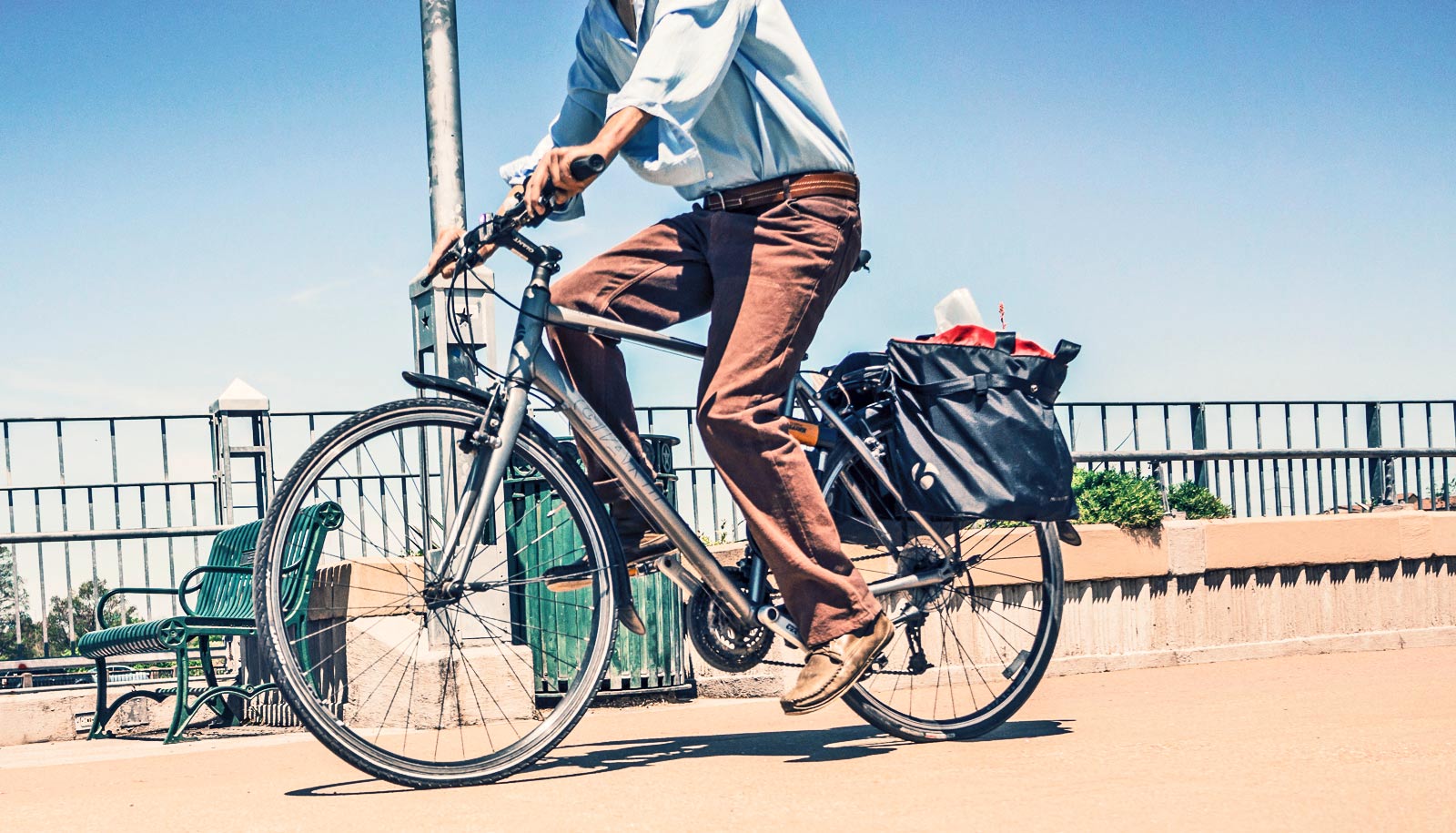Worries about the extra time needed to walk or bike to work are a big reason people hop into their cars for their daily commute, but those worries may be unfounded.
For a new study, people estimated how long it would take them to bike or walk to a common location in town. The majority estimated incorrectly, with most thinking it would take longer than it actually did.
The findings clarify the barriers that keep people from walking or biking, sometimes referred to as “active travel,” instead of using a car, says Melissa Bopp, associate professor of kinesiology at Penn State.
“People in general aren’t very good at estimating how long it’s going to take to get somewhere. That’s problematic when you’re trying to get someone to walk or bike somewhere. Traveling by foot or bike has a lot of benefits, but not a lot of people do it. They may think they can’t do it because it’s too far and it’ll take too long, when it turns out it’s really not.”
Knowledge gaps
Active travel has many advantages, including better health and a cleaner environment. Despite the advantages, most people still commute by car—more than 90 percent of Americans drive a car to work. The key to getting people to travel more actively is to to learn more about why people don’t do so more often in the first place, Bopp says.
“We wanted to look at people’s knowledge, attitudes, and beliefs, because those are things we can try to change. I can’t change your age, but I can change your knowledge,” Bopp says.
“For example, people who aren’t familiar with walk or bike travel tend to assume you use the same route you would drive, which might be along a busy road. Meanwhile, in actuality, there’s a perfectly lovely bike path that only crosses that busy road once. That’s a knowledge gap we can fix.”
As reported in Transportmetrica A: Transport Science, researchers recruited 253 faculty and staff and 252 students at Penn State and asked them how often they drove, took the bus, walked, or biked to campus; how they felt about active travel; and how physically fit they were.
Participants also answered questions about how long they thought it would take them to walk or bike from their home to campus. Google Maps calculated actual travel times.
According to the findings, about 91 percent of faculty and staff incorrectly estimated how long it would take to walk to campus, and about 93 percent overestimated how long it would take to bike.
Students were a little better at estimating travel times—about 55 percent incorrectly estimated walking times and about 43 percent misestimated biking times. Almost everyone who was not accurate overestimated the travel time.
You can do it
Several characteristics could predict if someone was more likely to be “discordant,” or likely to estimate travel times incorrectly. Faculty and staff who thought parking was more available and accessible were more discordant, and women were more likely to be more discordant than men.
Self-efficacy, or self-confidence, is also a predictor, Bopp says.
Income drives motivation to walk, bike, or drive
“For faculty and staff, self-confidence for walking and biking in town or on campus was a huge predictor. We can have all the bike lanes in the world, but if you don’t feel confident to go out there and bike, then you’re not going to do it.
“But luckily, self-confidence is a targetable thing. Providing education, encouragement, and resources can help with that. There are urban biking classes you can take, for example.”
In contrast, people who rode a bike or walked more often were more likely to accurately predict travel times.
While the study looked at people predicting travel times when they shared a common destination, the results have broader implications, says Dangaia Sims, who worked on the study while earning her doctorate in kinesiology.
Big shift to biking could save $24 trillion globally
“Experience with active transportation will usually give someone a better understanding of how long it actually takes to commute by bike or on foot. While efforts can be taken to better educate the general public of how long it actually takes to commute somewhere via active modes, we recommend that they actually try it out for themselves.
“Often people indicate that the reason they choose to drive is that it’s much quicker than walking or biking when, in reality, that may not be the case.”
The Penn State Sustainability Institute’s Reinvention Fund supported the work.
Source: Penn State



